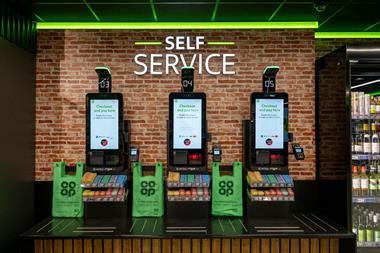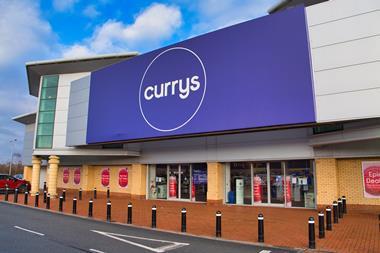Carpetright poured money into its IT when times were good. Now the economy has turned, IT chief Ian Woosey plans to use the investment to maximum effect.
Timing is everything, as Carpetright’s investment in IT has proved. Over the past five years the carpet giant has made the most of buoyant sales and profits by replacing major systems at its head office and introducing new ones in stores.
Carpetright group IT director Ian Woosey admits that he has been lucky with the economic timing of the upgrade programme. “We have had the support of the board to invest in better times,” he says. “I wouldn’t particularly want to [invest] now.”
The upshot is that the company has stable, adaptable technology platforms that it expects to serve it well as it weathers the downturn.
Woosey explains that the company wants to make better use of its technology in the short term. “Now that the huge projects are done, it is things that solve problems and are quick to implement. What can we do to eliminate cost, but also what can we do to drive sales? Are there areas where we can improve availability and lead times?
“We don’t have to make massive technical changes because over the past four or five years we have been through that.”
A huge amount of work has been done to ensure the company’s systems keep it competitive. When Woosey joined Carpetright in 2002, it used dozens of different suppliers and technologies. “We standardised as much as possible and outsourced some bits and pieces,” he says.
The retailer was able to make important process improvements at no extra cost. At the same time the cost of services such as telecoms reduced dramatically.
Before joining Carpetright, Woosey had spent about 10 years at Sainsbury’s in various roles before moving to the supply side with LogicaCMG and Itim Consulting.
He recalls that when he joined the retailer, IT was seen as a technical issue slightly distanced from the business. “Now I have responsibility for IT and the development of e-commerce, the central operations team reports to me and I have responsibility for our insurance business,” says Woosey. “My role has changed as it has got broader.”
Woosey has overseen the roll-out of a Microsoft Navision-based store system from retail IT specialist K3. A pilot version of the software was put in place more than two years ago and the main roll-out started at the end of 2006. Over the following two years, until October last year, the system was introduced into 561 stores.
All bases covered
Unlike most retailers, which have store systems centred on till systems, sales at Carpetright are order-based. Woosey says: “It is fairly common for someone to come in and place an order for a carpet where they require someone to go and measure up, purchase some accessories, and want it fitted. If there is more than one carpet ordered, they might want them fitted on different days. The system covers pretty much the whole of that process.”
Woosey says the improved IT set-up means store staff don’t have to deal with as much administration. Before the system was introduced there was a lot of paperwork and potential for things to be miskeyed. Processes have been improved in other areas, such as the goods received and inventory checks, as stock can now be barcode scanned.
Before the Microsoft system was implemented, all the head office systems were upgraded, which has made the operation of the business smoother. “We replaced our central finance, stock and merchandising systems with SAP in 2005 and, as part of a move to new premises, implemented a new warehousing system. A lot of that is automated. Apart from the actual fitting of the carpets, the process can be almost totally automated,” says Woosey.
This has also led to a reduction in lead times for customers by three to four days, which means that they can order a carpet and have it fitted within a couple of weeks.
Carpetright worked with K3 to ensure the Microsoft system was as user-friendly as possible so that it did not interfere with the sales process. Woosey says: “We have had lots of feedback that it is very intuitive and easy to use – even for staff who were not PC-literate.”
In addition, Carpetright has rolled out Triangle’s Retail Manager store communication system to all its stores with an initial basic set of functionality. To ensure its successful uptake, staff from across the business have been involved in its introduction right from the outset. And because they have already learnt to use the new Microsoft system, says Woosey, training them to use the Retail Manager system has been easier.
He adds that the company wants to extend the system’s functionality in 2009. It is already helping regional managers communicate more effectively, using the task management to give them an overview of store activity. Carpetright is considering introducing timesheet and ask-the-expert functionality to the Retail Manager system early this year.
So what’s going to be keeping Woosey busy now that the major IT upgrade cycle has been completed?
He says that budget decisions are made on a business case basis, so money will still be spent where it can be justified.
One key investment this year will be in the retailer’s web presence, as Carpetright launches a transactional website (Retail Week, October 31, 2008). By the end of the first quarter of this year, says Woosey, the company will have decided which IT platform to use and what the website will offer.
No firm decision has yet been made on whether the company will run the platform in-house or opt to use a service provider. Whichever route is chosen, the intention is that the business will be integrated across channels and a site should be up and running by the end of the year.
Work on this e-commerce initiative is being shared between IT teams and other staff in the business, who are attending the same workshops. Woosey has responsibility for the site both from an IT and a business perspective, drawing on his experience implementing transactional websites for customers when he worked at LogicaCMG.
Another possible area of attention for Woosey is the rolling out of the Microsoft system to the company’s international stores – although no decision has yet been taken on this. “We are reviewing what we do with our European operations, where the systems are slightly different, but I won’t pre-judge what we will do with that,” he says.
Carpetright’s IT team is about 40-strong, with some development and support operations outsourced. But Woosey expects the team will be kept busy this year by further general change in the company. “Whenever we change something in the business there is normally a requirement for IT to be involved,” he says. Acquisitions are one area that demand a lot of IT attention. He explains: “Things change so quickly. We have done a couple of acquisitions in just over a year. We get heavily involved in those, so there is plenty to keep us occupied.”
The IT team has worked on four acquisitions in total. Woosey says that although the elements vary, the principles are similar and the Carpetright team has become skilled at getting its systems implemented quickly. That means it can get the new business integrated without delay and make decisions quickly.
There is no doubt that 2009 will be a tough year for retailers across Carpetright’s sector. But the time and investment that the company has put in to modernise itself, taking advantage of standardised technology, has undoubtedly left it in a stronger position to weather the storm.
The introduction of a transactional website this year and possibilities for process improvements that will support ongoing changes to the business are likely to keep Woosey busy for some time to come.


























No comments yet